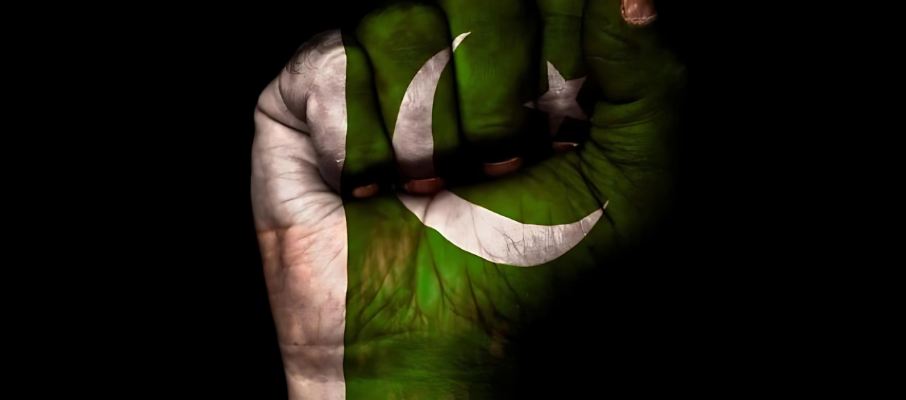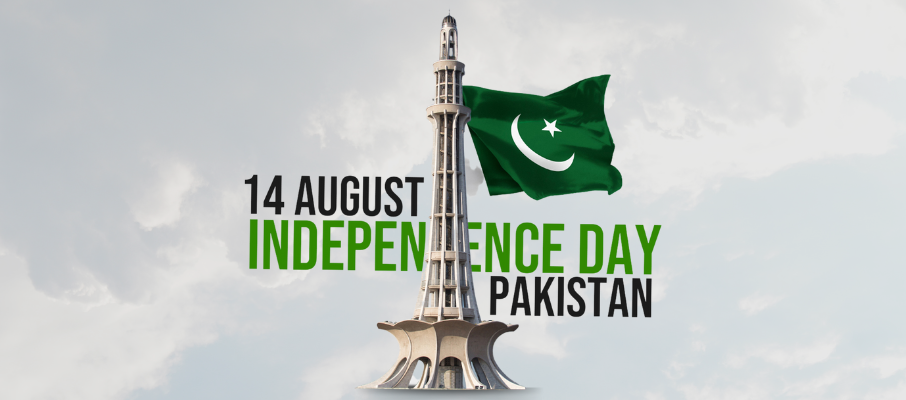Independence Day of Pakistan:
History of Independence of Pakistan:
The history of the Islamic Republic of Pakistan started on 14 August 1947 with the Independence of Pakistan when it was laid out as a Pakistani state in the English Federation because of the Pakistan Development and the Segment of India. Although the historical background of the Pakistani country, as per the authority schedule of the Pakistani government and Islamic regulation in the nation of India, started with Muhammad ibn Qasim, it arrived at its top during the Mongol time frame. In 1947, Pakistan comprised West Pakistan (presently Pakistan) and East Pakistan (currently Bangladesh).
Birth of a Nation:
The leader of the All India Muslim Association and later the Pakistan Muslim Association, Muhammad Ali Jinnah, turned into the lead delegated general and the overall secretary of the Muslim Association, Liaquat Ali Khan, the state head. The 1956 composition made Pakistan an Islamic vote-based system. Located along the main seaside relocation course of Homo sapiens out of Africa, the district was among the earliest occupied by current people. Town life in South Asia goes back 9,000 years to the Neolithic site of Mehrgarh in Pakistan. In contrast, municipal life started long with the Indus Valley Human progress at destinations like Mohenjo Daro and Harappa.
History and Cultural Heritage:
After the downfall of the Indus Valley Human advancement, Indo-Aryan clans moved to the Punjab during the Vedic Time frame (1500-500 BCE), combining their practices with nearby culture to shape Vedic culture. The Gandhara human progress flourished at the junction of India, Focal Asia, and the Center East. Present-day Pakistan assimilated different impacts throughout the long term, found in destinations like Taxila, Thatta, and Lahore. English rule in the nineteenth century encouraged the formation of Pakistan in 1947, impacted by innovators like Allama Iqbal and Muhammad Ali Jinnah. From that point forward, Pakistan has encountered times of development and bumpiness, counting the barrier of East Pakistan as Bangladesh.
History of locales:
Azad Jammu and Kashmir (AJK)
(AJK) is a self-supervising region in Pakistan-oversaw Kashmir, spread out after the 1947-48 Indo-Pak war, which followed the section of English India. The argument provoked the Line of Control (LoC) arrangement, parting the region between Pakistan and India. While AJK has its own government, Pakistan is in charge of important areas like sanctuary and international issues. The location is still crucial to the ongoing conflict between India and Pakistan over Kashmir.
History of Baloshistan:
The historical backdrop of Balochistan crosses the area across Pakistan, Iran, and Afghanistan, with undefined references found in Greek records around 650 BCE. The area’s roots reflect the Paleolithictime, signifying its old meaning.
History of East Bengal and East Pakistan:
The historical backdrop of East Bengal and East Pakistan from 1947 to 1971 encompasses the period when Bangladesh was crucial for Pakistan, subsequent the formation of self-government from English local rule in 1947 until its independence from Pakistan in 1971.
History of Gilgit Baltistan:
Gilgit-Baltistan, located in northern Pakistan, is rich in history due to its position on ancient trade routes like the Silk Road. It was once significant for neighboring empires and influenced by Persian, Greek, and Buddhist cultures. In the 19th century, it became part of Jammu and Kashmir under British rule. Following the 1947 partition of British India, Gilgit-Baltistan gained special administrative status when Pakistan took control. Today, it is known for its cultural diversity and historical significance.
Islamabad Capital Domain:
the commanding district of Pakistan’s capital, was laid out during the 1960s to supplant Karachi as the capital. The region was mostly rural and a part of the Punjab province before it became the capital. Establishing Islamabad provided the government with a more secure and centralized location. Today, Islamabad is known for its cutting-edge spacing and green spaces, and as Pakistan’s political and controlling focus.
The Regions of Khyber Pakhtunkhwa:
The region of Khyber Pakhtunkhwa in northwest Pakistan has a long history formed by its position on ancient trade routes and diverse cultures. When called the North-West Wilderness Territory under English rule, it was important for Punjab before turning into a different region after Pakistan’s freedom in 1947. Affected by different realms, it is known for its ancestral variety and scenic scenes.
History of Punjab region:
Today Punjab is the heartbeat of the nation. Punjab, a domain in northern India and eastern Pakistan, joins a well-heeled history impacted by getting upgrades, including the Indus Valley. It pragmatic the enlarge and fall of idiosyncratic areas, examining the Persians, the Greeks under Alexander the Great, and the Mughals. Throughout the nineteenth century, it became part of English India and came under English control.
After the 1947 piece, Punjab was segmented delimited by India and Pakistan, with the eastern piece varying into India’s Punjab circumstances and the western region in front of Pakistan’s Punjab district. Punjab is also a limestone-rich province with extensive mineral deposits of coal, rock-salt, dolomite, gypsum, and silica-sand Punjab’s Economy is mainly on Agriculture. By the high caliber of its geo-political position, Punjab was one of Great Britain’s most imperative assets in majestic India.
History of Sindh region:
Sindh, a locale in southeastern Pakistan, has experiences that trace back to the old Indus Valley Human progress, one of the world’s earliest metropolitan societies. Persian, Greek, and Middle Eastern triumphs subsequently impacted it. Sindh was a part of British India in the 19th century when the British ruled it. After the 1947 parcel, it turned into a territory of Pakistan. Known for its rich social legacy and verifiable importance, Sindh remains a significant district in Pakistan.

Pakistan’s new development:
Muhammad Ali Jinnah and the All-India Muslim League drove the groundwork for Pakistan in 1947. This was due to the open-door advance that started in the 1940s. Pakistan emerged from the struggle for independence against British colonial rule. The nation was born out of the demand for a separate homeland for Muslims. From the 1960s to the 1980s, Bengali became widely recognized as the official language. Zulfiqar Ali Bhutto and Benazir Bhutto worked to restore a democratic system during this period. They were significant individuals who contributed to Pakistan’s development.
The Balochistan viciousness has required extra basic entryways and making game plans for conventional issues, beginning around 2000. all through the 2000s, trustworthy and regular society parties, similar near Legal Counselors’ Headway (2007-2009), stayed aware of rules, and coordinated, and fundamental doors. 14, 1954. The song sections represent the nation’s steadfastness, reassurance, and teaching principles. The melody’s music is well-known for its brilliance and enthusiasm. The main intention of Making Pakistan become a state just like the new ‘’Madinah’’.
National Anthem of Pakistan:
Renowned Urdu poet Hafeez Jalandhari wrote the lyrics of Tarana-e-Pakistan. It was Pakistan’s first national anthem, which were selected from multiple submissions and officially approved in 1952. These lyrics were broadcasted on August 14, 1947. The anthem consists of 15 lines and 50 words, with the only Urdu word being “Ka”; the rest are Persian and Arabic. The government formally adopted the national anthem on August 13, 1954, a day before the country’s seventh Independence Day. The music by Chagla and Jalandhari’s verses combined to create Qaumi Taranah, symbolizing the nation’s journey toward freedom and its core values. Notable performers included Ahmad Rushdi, Shamim Bano, Kokab Jehan, and others.
Pakistani Flag:
The Green stripe indicates the Islam and Muslim’s majority and white stripe indicates religious minority.
Center of the flag, the crescent and the star which indicates the Islam’s traditional symbol of progress and prosperity.
Culture of Pakistan:
Pakistan is a vibrant country from South Asia. National language of Pakistan is urdu and some of the traditional languages like Punjabi, Sindhi and Pashto as well.
It’s traditional foods like Biryani, nihari and Haleem.
The national dress of Pakistan is Shalwar Qameez and most of the men wear Shalwar Qameez with turbans and womens donning scarves. Famous games like cricket, hockey and football.




